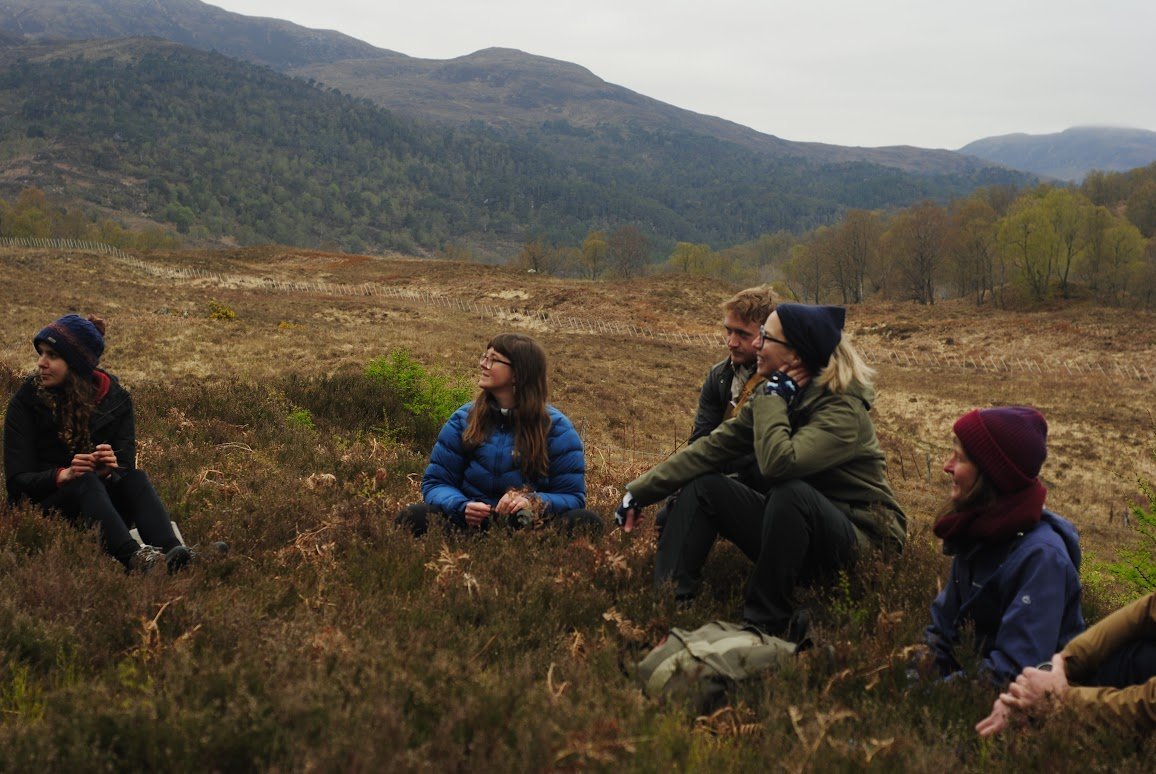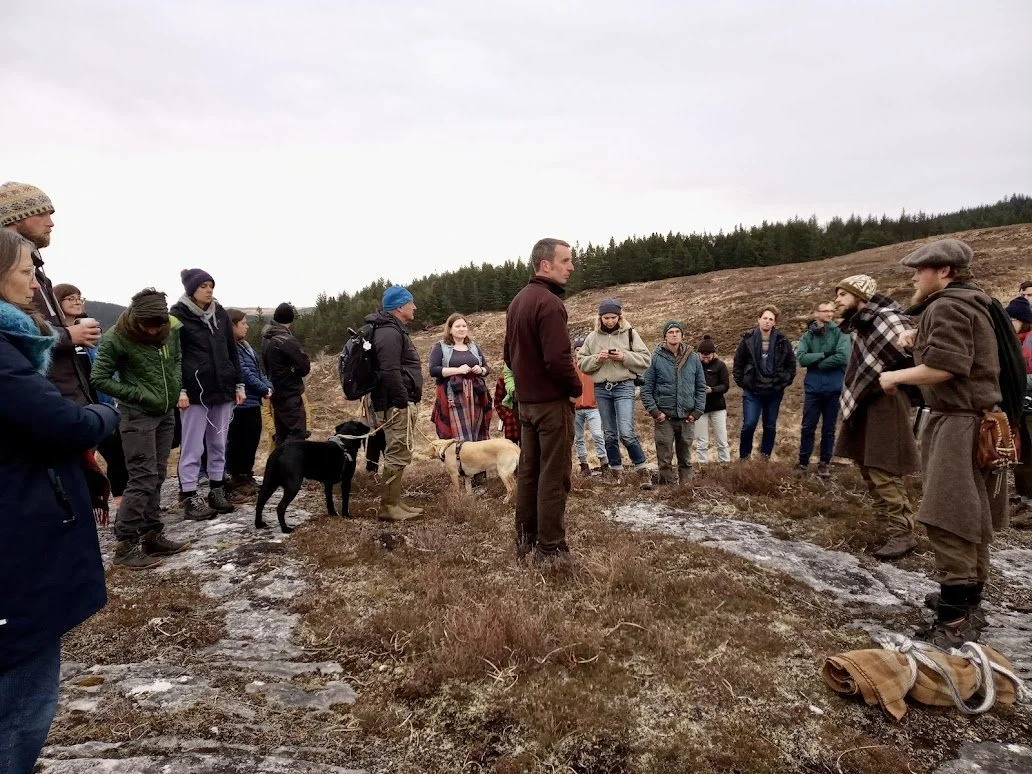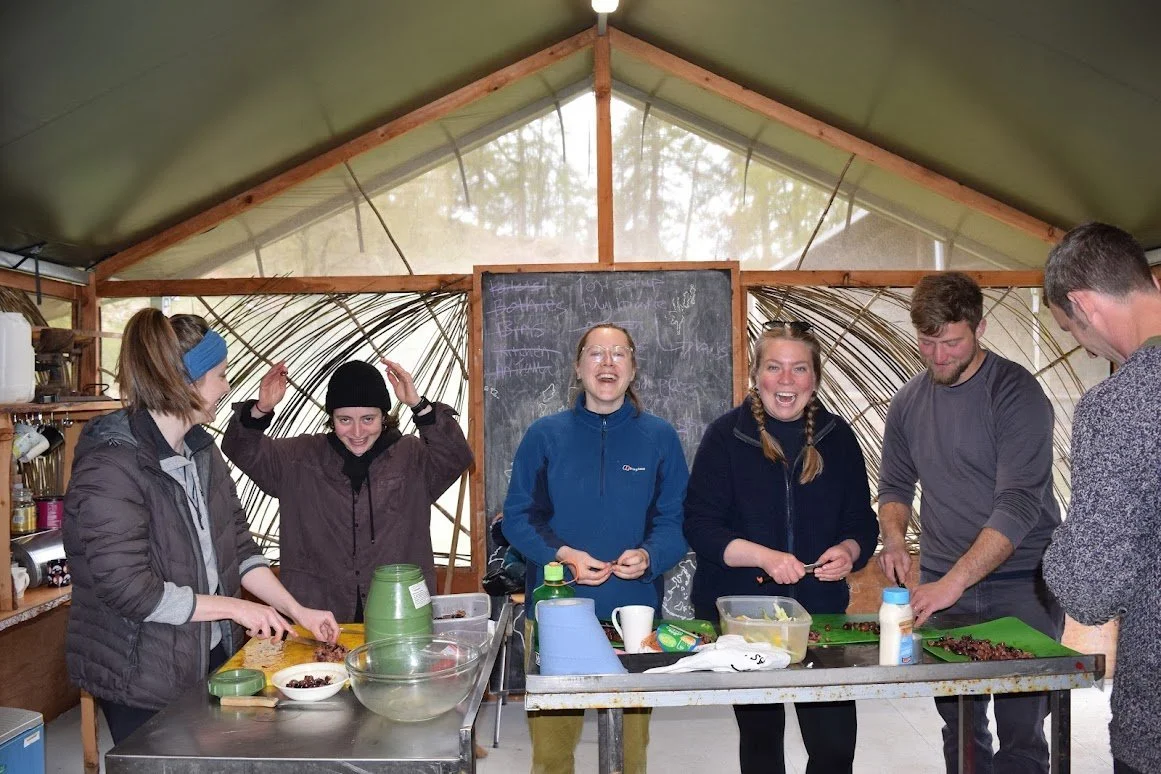FOSTERING COMMUNITY THROUGH CEILIDH’ING.
By Ben Murphy, 20 June 2023
Beltane @ the Shieling Project was a one-and-a-half-day event held on 28th and 29th April at Dumnaglass in Strathfarrar, the Scottish highlands. The event brought together young people (aged 15-30) and sustainability practitioners to network, socialise and learn about rural land use through workshops and discussions. Having worked at the Project in 2022, event organisers Rosanna Crawford and Ben Murphy had identified a need to address the isolation (both social and professional) that young people in rural Scotland are experiencing. The event centred around the themes of biodiversity, rural depopulation and health and well-being.
Before the clearances, Dumnaglass was home to around 200 people, who used the Shieling agricultural system. The Shieling Project is an off-grid learning centre that promotes outdoor living, learning and resilience. The tradition of the shieling, where folk lived outdoors all summer, the women and children taking the cattle up into the hills, gives us a window onto the past that could inform our sustainable future.
What we now understand as an ancient Gaelic tradition, dùthchas describes an understanding of the inter-relationship between land, people and culture that we hope to rekindle. Dùthchas prefigures our 21st-century idea of the need for ecological balance. One of its traditions was the ceilidh, and on Saturday night we gathered round the fire to sing, dance and share stories.
Beltane is the Gaelic May Day festival, celebrated midway between spring equinox and summer solstice. It is a celebration of the return of the fertility of the land and would have been a time when livestock would be put out to pasture. The word ‘Beltane’ roughly translates as ‘bright fire’ and is one of the most important rituals in the Gaelic calendar.
NATURE-BASED WELLBEING
Melissa Stancil, a doctoral researcher from North Carolina opened the event with a presentation of her research at the Project in 2022 about culture-specific nature prescriptions – prescriptions that include spending time outside in nature, in this case at the Shieling, where Gaelic culture and language are an important part of day-to-day learning activities.
Melissa's findings so far have shown participants felt calm and fulfilled, and experienced an increased sense of community. Her presentation fed into wider conversations about the limitations of living rurally – in terms of isolation – but also the potential and desire for community building. One of the highlights of living and working at the Project is the sense of community fostered between on-site staff, sessional staff and project visitors.
LAND-USE AND LAND-OWNERSHIP
Megan Rowland ran a workshop on ‘bridging divides in deer management and conservation’. As a deer stalker, latterly with NatureScot, Megan discussed the often-tense topic of deer and land management, using the natural regeneration taking place within the Project’s boundary fences as an example.
A highlight for many participants was the panel discussion on Saturday afternoon about rural depopulation. Simone Piras, a researcher at James Hutton Institute, set the scene in the European context. Wendy Reid, Development manager for Ulva Development Trust, and Green MSP Arianne Burgess joined Simone to discuss the unique socio-economic issues facing rural Scotland in relation to land ownership and more.
On Sunday, following a hands-on session of oat winnowing, Col Gordon, a local regenerative farmer on the Black Isle, outlined the history of land activism and the potential of agroecology in regeneration.
Rural Housing Scotland shared their Smart Clachan Toolkit which is being trialed with Stòras Uibhist and Comrie Croft. A Clachan is a traditional Scottish hamlet consisting of a few houses, such as byres, barns, and kailyard and walled gardens for vegetables. Clachans were close knit communities often working cooperatively on shared land.
To round up the event on Sunday, we gathered in the hall for a presentation of an ongoing photovoice research project – a participatory action research method used to amplify voices that are often silent in political arenas. This involved some attendees sharing photos and reflections on the subject “To me, this is rural sustainability”.
CONCLUSION: MORE CEILIDHS!
The event achieved its aim, going beyond expectations in terms of numbers and attendee feedback, with particularly emotional thanks given by several attendees. The event gave young people the opportunity to meet like-minded folk to share concerns about the many challenges facing rural Scotland today and build hope together for the future.
We have not identified any other similar opportunities for young people working in rural Scotland to exchange experiences while learning from others and hope that this will be the first of many such gatherings.





